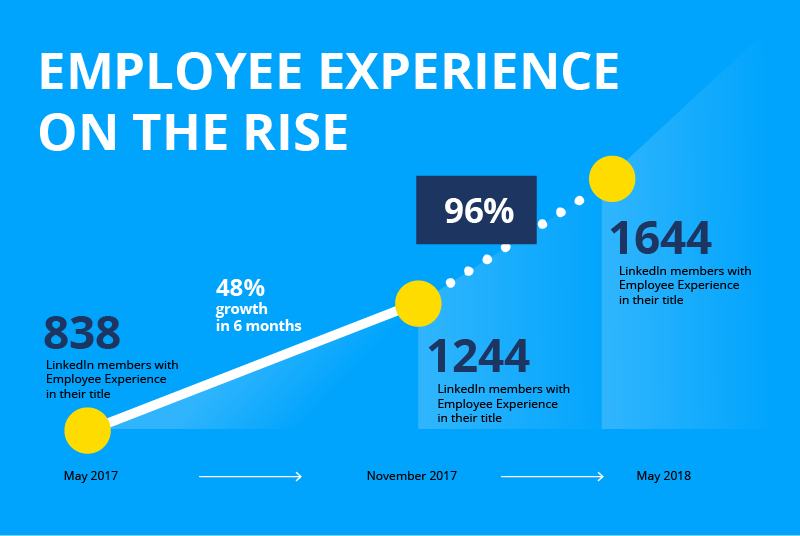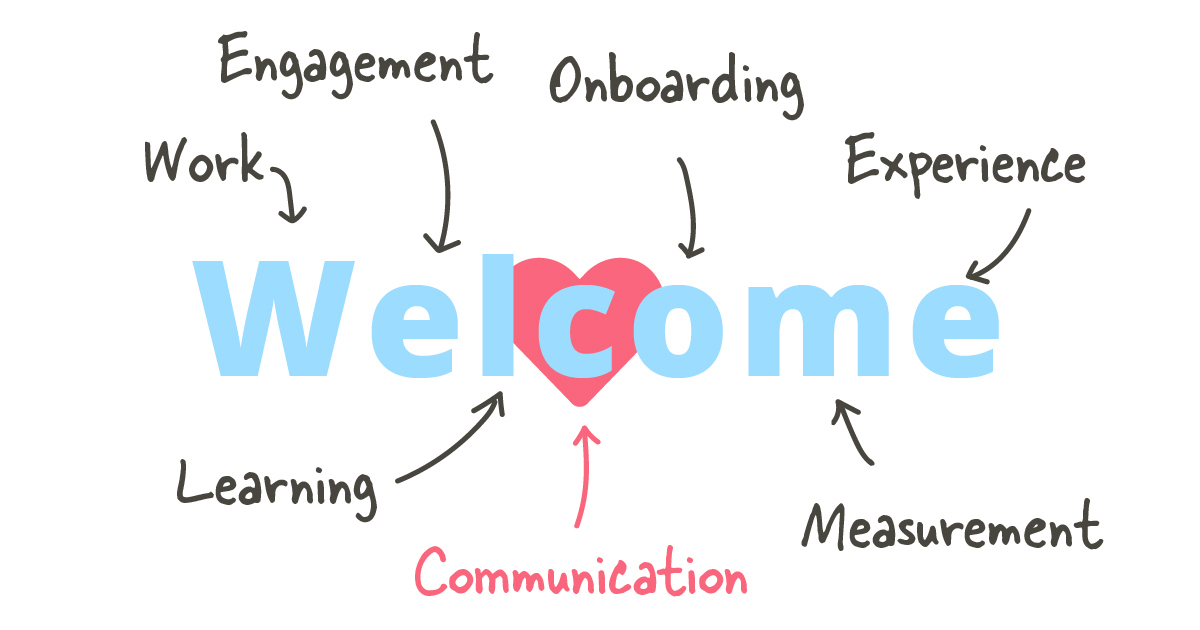
The employee experience movement has grown at an annual global rate of close to 100 percent. That’s the conclusion of Staffbase following a study of the trend over a period of twelve months, from May 2017 to May 2018.
During the past year, the number of professionals adopting new and broadened leadership and organizational practices blending internal communication, Human Resources, and marketing strategies has increased from 838 to 1644, a rate of 96 percent. These are the people responsible for helping their organizations to manage the changing nature of work and creating better and more productive working practices for their employees.
In May 2017, Staffbase published Employee Experience vs. Employee Engagement: A Comparative Study, setting a baseline for quantifying the theory that employee experience design was well on its way to becoming a business phenomenon. Seeing that companies like Airbnb were scraping their traditional HR services in favor of more holistic “Employee Experience” departments, Staffbase began looking at the numbers of LinkedIn members in companies with anywhere from 201 to more than 10,000 employees who identified themselves with either “employee engagement” or “employee experience” in their job titles.
Our initial count revealed that employee engagement was favored by a margin of 2,173 to 838. But given the relative recentness of the employee experience movement, the already high number of “experience” professionals led us to predict a rapid rise in companies adopting digital workplace strategies that are acknowledging the changing nature of work and taking steps toward creating positive experiences that enable employees to do their jobs in totally new ways.
As of May 31, 2018, there were 1,644 employee experience professionals on LinkedIn, compared to 3,087 (a 42 percent increase from a year ago) in employee engagement. In India and Australia, the experience movement has grown at a remarkable pace. In one year, the number of “experience” professionals in the former country has increased by 105 percent, while the rate of growth in the latter is an astonishing 220 percent! In Canada and the United Kingdom, growth is moving at around 90 percent.
In the United States, the rate of increase is 90.3 percent, with especially robust growth being spurred by innovative companies whose digital workplace strategies recognize how employee experience boosts work performance. (Consider that Facebook, Google, and Apple have remained the top three companies on Jacob Morgan’s Employee Experience Index.)
These numbers are a strong indication that the way people work is changing. The title of Employee Experience or People Manager is no longer just a trendy euphemism for someone doing the same old work of HR. Instead, they are the ones leading the way in reimagining how people can work differently—better, happier, and more productively—fostering greater levels of employee engagement, enthusiasm, involvement, retention, and employer brand commitment.
For more information on the employee experience and its relationship to employee engagement and the digital workplace, you might also want to read:




